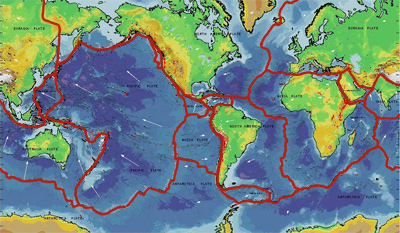Click on image for full size
Image Courtesy of Adam Kent
Triggers of Volcanic Eruptions in Oregon's Mount Hood Investigated
Scientists have learned that Mount Hood, Oregon's tallest mountain, has erupted in the past due to the mixing of two different types of magma.
"The data will help give us a better road map to what a future eruption on Mount Hood will look like, and what will take place before it occurs," said Adam Kent, a geophysicist at Oregon State University. "It should also help us understand the nature of future eruptions."
Two types of magma, which is molten underground rock, are usually involved in volcanic processes. The first is mafic magma, which has less silica in it and is more fluid. The second is felsic magma, which has a higher silica content and is thicker, like toothpaste. A third type of magma, called andesite, is composed of a mixture of both felsic and mafic magma.
Andesite is common in volcanoes that form at subduction zones--regions where one tectonic plate is sinking below another--and include those that form around the Pacific Ocean "ring of fire." The rocks around Mount Hood are almost completely formed from andesitic magma.
Scientists think that the mixing of mafic magma with thicker felsic magma often happens just before an actual eruption.
"The intense mixing of these two types of magma causes an increase in pressure and other effects, and is usually the trigger for an eruption," Kent said. "But this process doesn't happen in all volcanic events. In the Cascade Range, Mount Hood appears to be one volcano where andesitic magma and recharge-driven eruptions are dominant."
Even though the Cascade Range is linked to melting rock from the Cascadia Subduction Zone, some parts of the crust are more difficult than others for magma to move through. Mount Hood appears to be in a region where it takes the extra pressure of magma mixing to cause an eruption.














